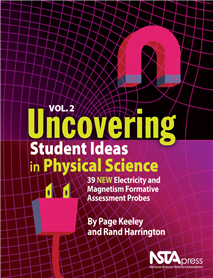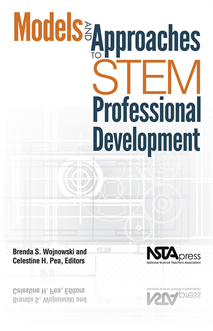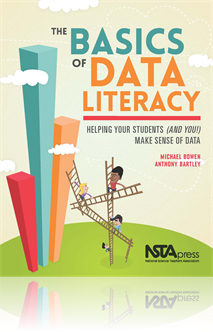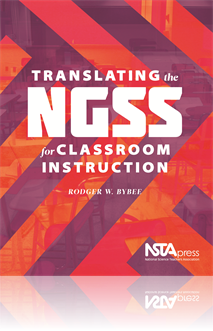All Book Chapters
Book Chapter
The purpose of this assessment probe is to elicit students’ ideas about complete circuits. It is designed to reveal whether students recognize how just one wire can be used to make a circular pathway of electricity through the battery, bulb, and wi...
Book Chapter
The purpose of this assessment probe is to elicit students’ ideas about complete circuits and the structure of a lightbulb. It is designed to reveal how students think a battery and bulb need to be connected in order to complete a circuit. The prob...
Book Chapter
The purpose of this assessment probe is to elicit students’ ideas about complete circuits. It is designed to reveal how students think current flows in a circuit. The probe is best used with students in grades 3–8. Make sure students are familiar...
Book Chapter
How Do You Think About the Flow of Electric Current Through a Circuit?
The purpose of this assessment probe is to elicit students’ ideas about electric current. It is designed to identify the mental models students use to explain how electric current flows in a simple circuit. The probe is best used with middle and hi...
Book Chapter
The purpose of this assessment probe is to elicit students’ ideas about types of circuits—series and parallel. It is designed to reveal students’ thinking about the effect of circuit configuration on bulb brightness. The probe is best used with...
Book Chapter
How Would You Rank the Brightness of the Bulbs?
The purpose of this assessment probe is to elicit students’ ideas about different types of circuits. It is designed to find out the reasons students use to rank the brightness of bulbs in three different types of circuits. This ranking task probe i...
Book Chapter
How Does the Current in Each Battery Compare?
The purpose of this assessment probe is to elicit students’ ideas about batteries. It is designed to reveal students’ ideas about how the flow of current through a battery is affected by the type of circuit. The probe is best used with middle or ...
Book Chapter
Does It Matter if the Wire Has Knots?
The purpose of this assessment probe is to elicit students’ ideas about the flow of electric current through a wire. It is designed to reveal the limitations of analogies students use to explain the flow of electricity. The probe is best used with ...
Book Chapter
Does Electricity Leak From an Outlet?
The purpose of this assessment probe is to elicit students’ ideas about electricity. It is designed to reveal students’ ideas about how current leaves a wall socket. The probe is best used with middle and high school students. Point to an outlet ...
Book Chapter
The purpose of this assessment probe is to elicit students’ ideas about household (AC) current. The probe is designed to reveal students’ ideas about what happens when a two-pronged plug is placed in an outlet. If a two-pronged plug is available,...
Book Chapter
The purpose of this assessment probe is to elicit students’ ideas about chemical cells. It is designed to reveal what students think is happening inside a common battery as it gets “used up.” The word weight is used instead of mass in order to ...
Book Chapter
The purpose of this assessment probe is to elicit students’ ideas about electric charge. The probe is designed to determine how fast students think electric charges in a wire move. It is best used with high school students. If materials are availab...
Book Chapter
Can Magnets Push or Pull Without Touching?
The purpose of this assessment probe is to elicit students’ ideas about magnetic force. It is designed to find out whether students recognize that magnets can push (repel) or pull (attract) certain objects at a distance without touching the object....
Book Chapter
Can You Pick It up With a Magnet?
The purpose of this assessment probe is to elicit students’ ideas about magnetic materials. The probe is designed to find out which types of materials students think interact with magnets and whether they think all metals interact with magnets. Thi...
Book Chapter
Does a Magnet Pick up Any Kind of Metal?
The purpose of this assessment probe is to elicit students’ ideas about magnetic materials. It is designed to determine whether students recognize that only certain metals interact with magnets. Use a steel fork—not stainless steel—to demonstra...
Book Chapter
What Happens When You Wrap a Magnet With Aluminum Foil?
The purpose of this assessment probe is to elicit students’ ideas about magnetic force. It is designed to reveal students’ ideas about how magnetism passes through some materials. Before beginning show students how the magnet interacts with the p...
Book Chapter
What Happens If You Use the Other End of the Magnet?
The purpose of this assessment probe is to elicit students’ ideas about magnetic interactions. It is designed to find out whether students think the pole of a magnet determines whether it will attract or repel magnetic material. It is best used wit...
Book Chapter
Does a Magnet Work Without Air?
The purpose of this assessment probe is to elicit students’ ideas about magnetism. It is designed to reveal whether students think air is necessary for magnetic interaction. Because some students think gravity affects magnetism and also believe gra...
Book Chapter
The purpose of this assessment probe is to elicit students’ ideas about magnetic interactions. It is designed to find out whether students recognize that a magnet and magnetic materials attract each other. The probe is best used with middle school ...
Book Chapter
How Would a Magnet Work on the Moon?
The purpose of this assessment probe is to elicit students’ ideas about magnetism. It is designed to reveal whether students think gravity has an effect on magnetism. Before using the probe, it’s important that students know how conditions on the...
Book Chapter
What Happens When You Hold a Magnet Near a Refrigerator?
The purpose of this assessment probe is to elicit students’ ideas about magnetic interactions. It is designed to find out how students visually represent magnetic interactions. If materials are available, consider demonstrating the probe scenario a...
Book Chapter
What Happens When a Magnet is Brought Near a Charged Ball?
The purpose of this assessment probe is to elicit students’ ideas about magnetic interactions. It is designed to find out whether students confuse electrostatic effects with magnetic effects and is best used for discussion at the start of a unit on...
Book Chapter
The purpose of this assessment probe is to elicit students’ ideas about magnetic interactions. It is designed to find out whether students recognize that it’s a force between magnetic objects that causes them to “stick.” The probe is best use...
Book Chapter
What Happens When a Magnet Breaks?
The purpose of this assessment probe is to elicit students’ ideas about the properties of magnets. The probe is designed to find out how students would represent the poles of a broken magnet. It is best used with middle and high school students and...
Book Chapter
How Can You Represent a Magnetic Field?
The purpose of this assessment probe is to elicit students’ ideas about magnetic fields. It is designed to find out how students would represent a magnetic field using magnetic field lines. The probe is best used with middle and high school student...
Book Chapter
The purpose of this assessment probe is to elicit students’ ideas about magnetization. It is designed to find out how students would represent, at the particle level, a nonmagnetized versus a magnetized nail. The probe is best used with middle and ...
Book Chapter
How Can You Make an Electromagnet?
The purpose of this assessment probe is to elicit students’ ideas about electromagnets. It is designed to reveal where students think the magnetic effect comes from when wire is wrapped around a nail to make a magnet. The probe is best used with mi...
Book Chapter
Does the Type of Wire Make a Difference in an Electromagnet?
The purpose of this assessment probe is to elicit students’ ideas about electromagnets. The probe is designed to reveal whether students recognize that an electromagnetic effect can pass through an insulated wire. This probe is best used with middl...
Book Chapter
How Can You Make a Stronger Electromagnet?
The purpose of this assessment probe is to elicit students’ ideas about electromagnets. It is designed to reveal what variables students think affect the strength of an electromagnet. This probe is best used with middle and high school students. If...
Book Chapter
What Happens When You Bring a Compass Near a Current Carrying Wire?
The purpose of this probe is to elicit student ideas about magnetic poles. The probe is designed to reveal whether students think a magnetic field must always have magnetic poles. It is best used with high school students. If materials are available,...
Book Chapter
A Need for Speed? Should Speed Limits Be Lowered to Reduce Traffic Fatalities?
During this unit, students will investigate physical science concepts related to forces and motion. They will then synthesize and apply their learning to grapple with the question of whether speed limits should be lowered to reduce traffic accidents....
Book Chapter
Activity 5: Some Striped Seeds Seem Similar! Biology: Genetic Variation
There is a pattern in nature that appears almost every time we measure or count individuals of a species based on a specific characteristic. This activity puts students in the role of scientists as they learn about statistics and genetic variation wi...
Book Chapter
The Importance of Viable Models in the Construction of Professional Development
With the release of the Framework and the NGGS, we have the opportunity to improve the teaching and learning of science and to help move our nation forward by providing all students with the depth of understanding of big ideas, scientific and enginee...
Book Chapter
In this chapter, the authors look at three basic statistical tests. The first is the t-test, which is used when you have nominal or ordinal data and only two test variables you are comparing (e.g., the speed of cats and dogs). The second is the analy...
Book Chapter
From the Framework to the NGSS
This chapter first reviews essential features of A Framework for K–12 Science Education which provides a foundation for the Next Generation Science Standards (NGSS). Second, the chapter describes the important features of NGSS and introduces the N...
Book Chapter
NGSS: 10 Frequently Answered Questions
This chapter provides answers to frequently asked and answered questions. It comes as no surprise that the questions science teachers ask have to do with the changes implied by NGSS and the changes required in classroom practices. The ultimate benef...
Book Chapter
From NGSS to Instruction in an Elementary Classroom
Implementing the standards does present significant challenges—the obvious and immediate challenge of classroom instruction. There also is the long-term challenge of contributing to students’ progressive understanding across the K–12 curriculum...
Book Chapter
From NGSS to Instruction in a Middle School Classroom
For middle school science teachers, one of the most fundamental changes involves curriculum, instruction, and assessments. This chapter uses performance expectations from the life sciences as the basis for a description of how Next Generation Science...
Book Chapter
From NGSS to Instruction in a High School Classroom
This chapter first presents performance expectations that describe the competencies and content for instruction and assessment in a high school biology class. This is followed by a description of a teaching sequence that integrates the practices, cor...
Book Chapter
The general purpose of education standards is to reset the goals for education, then make curriculum programs, classroom instruction, and education assessments more coherent through processes of reform. So, we have to begin as soon as possible (ASAP)...








